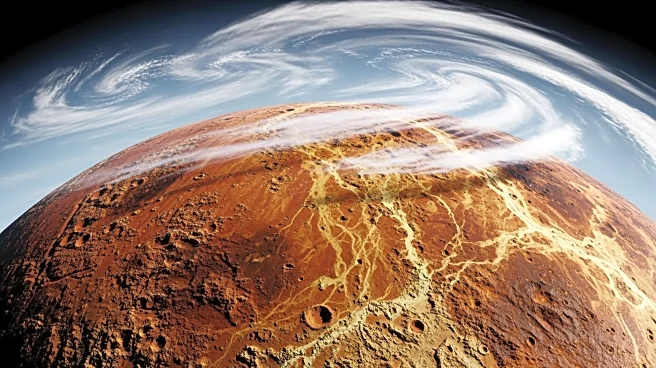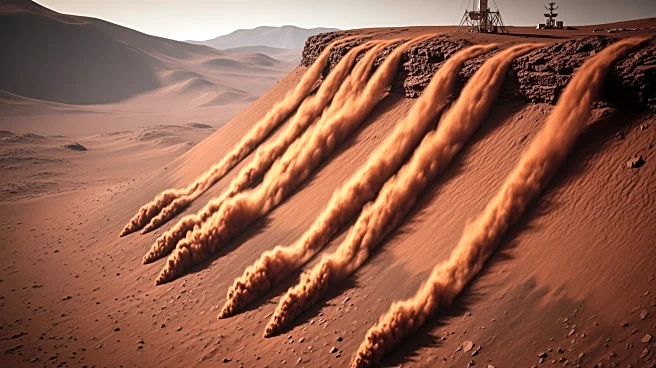What's Happening?
A new study led by Maxence Lefèvre from the Sorbonne has developed a model to better understand the surface conditions of Venus, focusing on temperature swings and dust transport. This research aims to assist
future missions to Venus by providing insights into the planet's atmospheric dynamics. The study uses limited data from previous missions, such as Venera, to simulate regional weather patterns on Venus, highlighting the impact of wind on temperature and dust movement. The model differentiates between various regions of Venus, such as highlands and lowlands, and examines the diurnal shifts in wind patterns, which affect surface temperatures. This research is crucial for upcoming missions like DaVINCI, which will explore Venus's surface, particularly in areas like Alpha Regio, where dust storms are prevalent.
Why It's Important?
Understanding Venus's surface conditions is vital for the success of future exploratory missions. The insights from this study can help mission planners anticipate challenges such as dust storms and temperature variations, which could affect landing and operations on the planet. By modeling the atmospheric dynamics, researchers can better prepare for the environmental conditions that probes like DaVINCI will encounter. This knowledge is essential for designing equipment that can withstand Venus's harsh environment, ensuring the collection of valuable scientific data. The study also contributes to the broader understanding of planetary atmospheres, which can inform research on other celestial bodies.
What's Next?
Future missions to Venus, including Envision and Veritas, will benefit from the findings of this study. These missions are expected to focus on the poles and other regions with unique atmospheric conditions. The DaVINCI mission, scheduled to land in Alpha Regio, will use this research to navigate potential dust storms and temperature fluctuations. Researchers plan to refine the model by incorporating additional factors such as surface albedo and thermal inertia, which could further enhance the accuracy of predictions. As new data becomes available from these missions, the model can be updated to provide even more precise insights into Venus's atmospheric dynamics.
Beyond the Headlines
The study's approach to modeling Venus's surface conditions represents a significant shift from previous methods that treated the planet's surface as a uniform entity. By breaking down the surface into distinct regions, researchers can better understand the complex interactions between wind, temperature, and dust transport. This regional modeling technique could be applied to other planets, offering a new perspective on planetary science. Additionally, the study highlights the importance of interdisciplinary collaboration, combining atmospheric science, geology, and engineering to tackle the challenges of space exploration.











